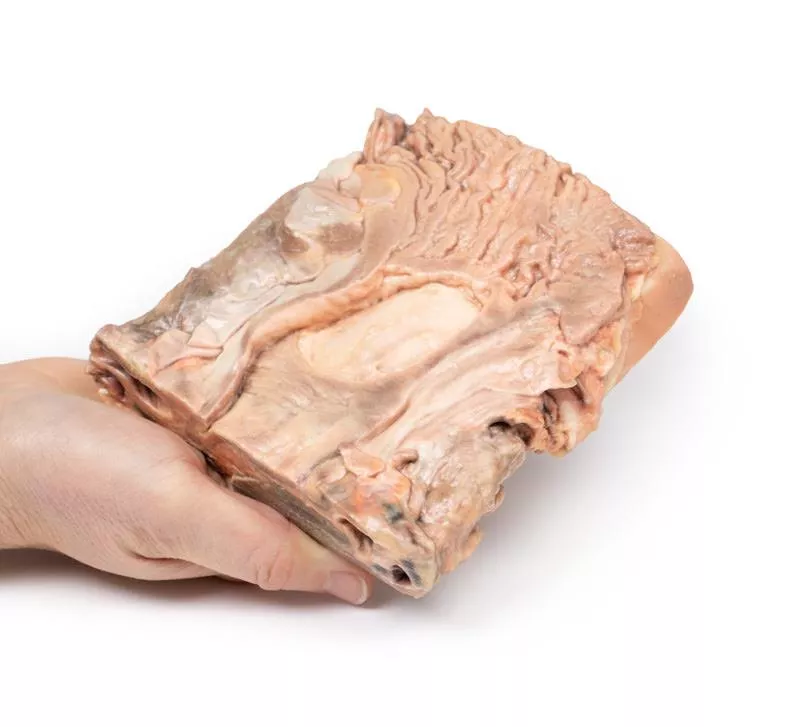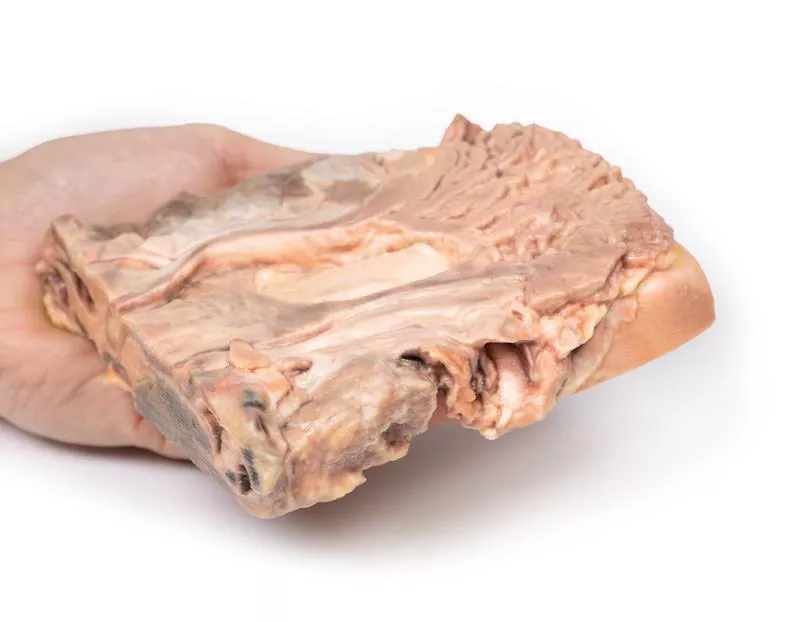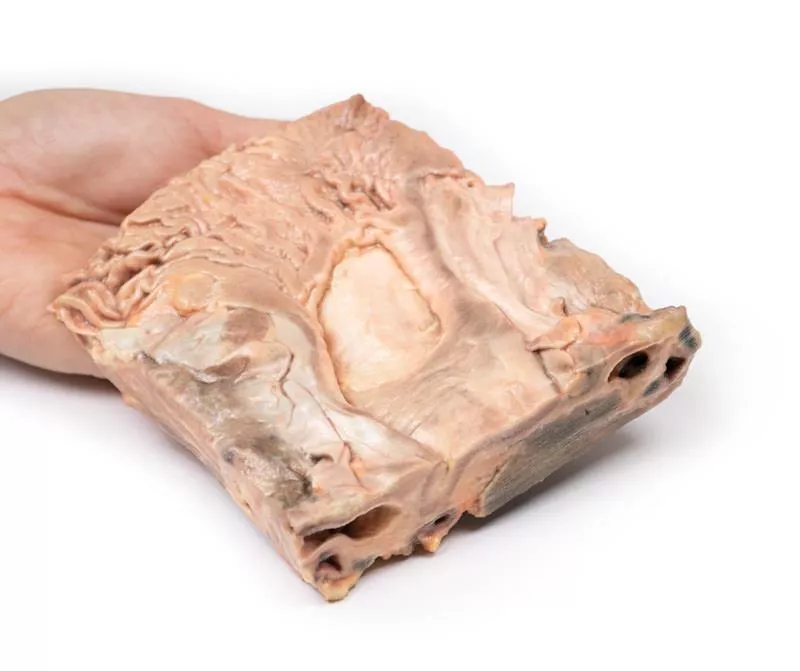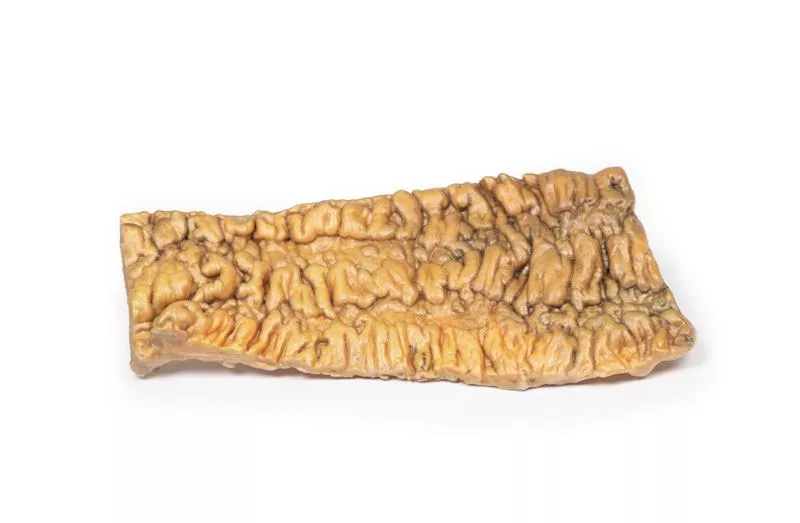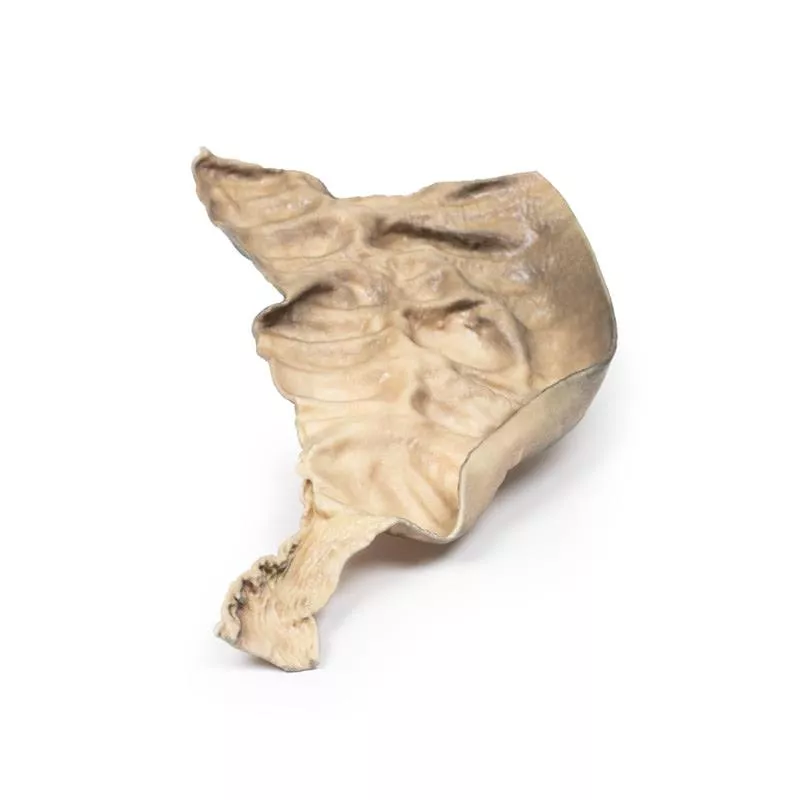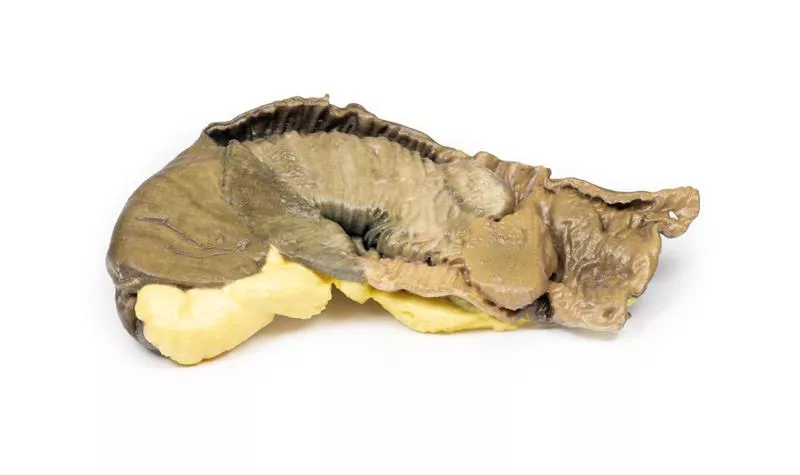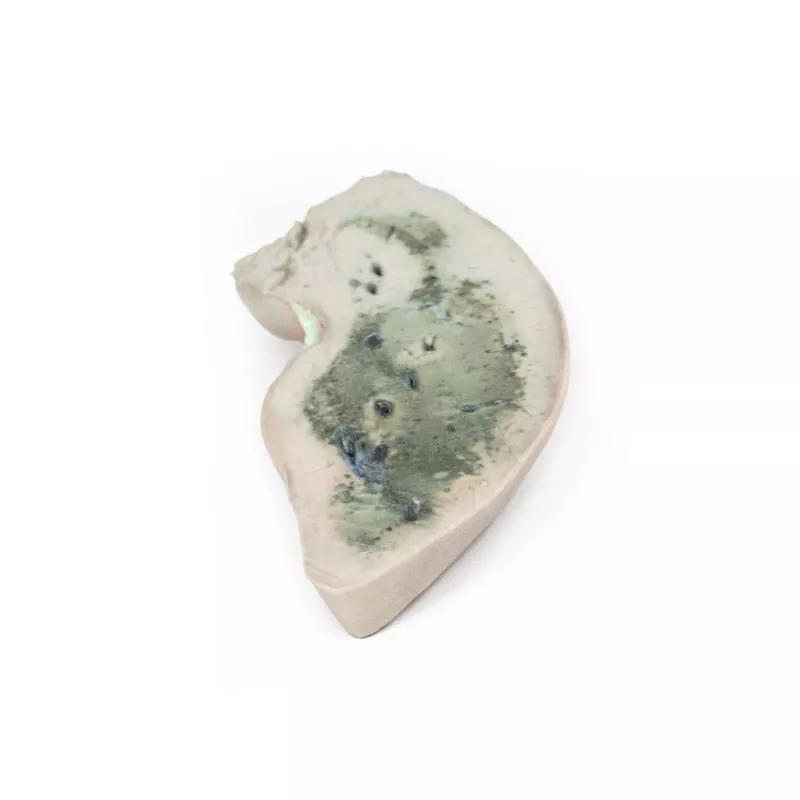Product information "Chronic Gastric Ulcer"
Clinical History
An elderly patient with long-standing indigestion collapsed and died from a massive stroke.
Pathology
A 2?cm coronal section includes parts of the stomach, diaphragm, liver, and pancreas. A large gastric ulcer (5–6?cm) is located at the lesser curvature near the gastro-oesophageal junction. It has a smooth base and slightly raised edges, with fibrosis pulling mucosal folds inward — a sign of benign ulceration.
Further Information
Gastric ulcers often cause post-meal pain, nausea, and weight loss. Common causes include Helicobacter pylori and NSAIDs. Diagnosis is via endoscopy or H. pylori testing. Treatment involves acid-suppressing drugs (e.g., PPIs), antibiotics for H. pylori, and stopping NSAIDs and smoking. Ulcers affect about 4% of the population.
An elderly patient with long-standing indigestion collapsed and died from a massive stroke.
Pathology
A 2?cm coronal section includes parts of the stomach, diaphragm, liver, and pancreas. A large gastric ulcer (5–6?cm) is located at the lesser curvature near the gastro-oesophageal junction. It has a smooth base and slightly raised edges, with fibrosis pulling mucosal folds inward — a sign of benign ulceration.
Further Information
Gastric ulcers often cause post-meal pain, nausea, and weight loss. Common causes include Helicobacter pylori and NSAIDs. Diagnosis is via endoscopy or H. pylori testing. Treatment involves acid-suppressing drugs (e.g., PPIs), antibiotics for H. pylori, and stopping NSAIDs and smoking. Ulcers affect about 4% of the population.
Erler-Zimmer
Erler-Zimmer GmbH & Co.KG
Hauptstrasse 27
77886 Lauf
Germany
info@erler-zimmer.de
Achtung! Medizinisches Ausbildungsmaterial, kein Spielzeug. Nicht geeignet für Personen unter 14 Jahren.
Attention! Medical training material, not a toy. Not suitable for persons under 14 years of age.





















